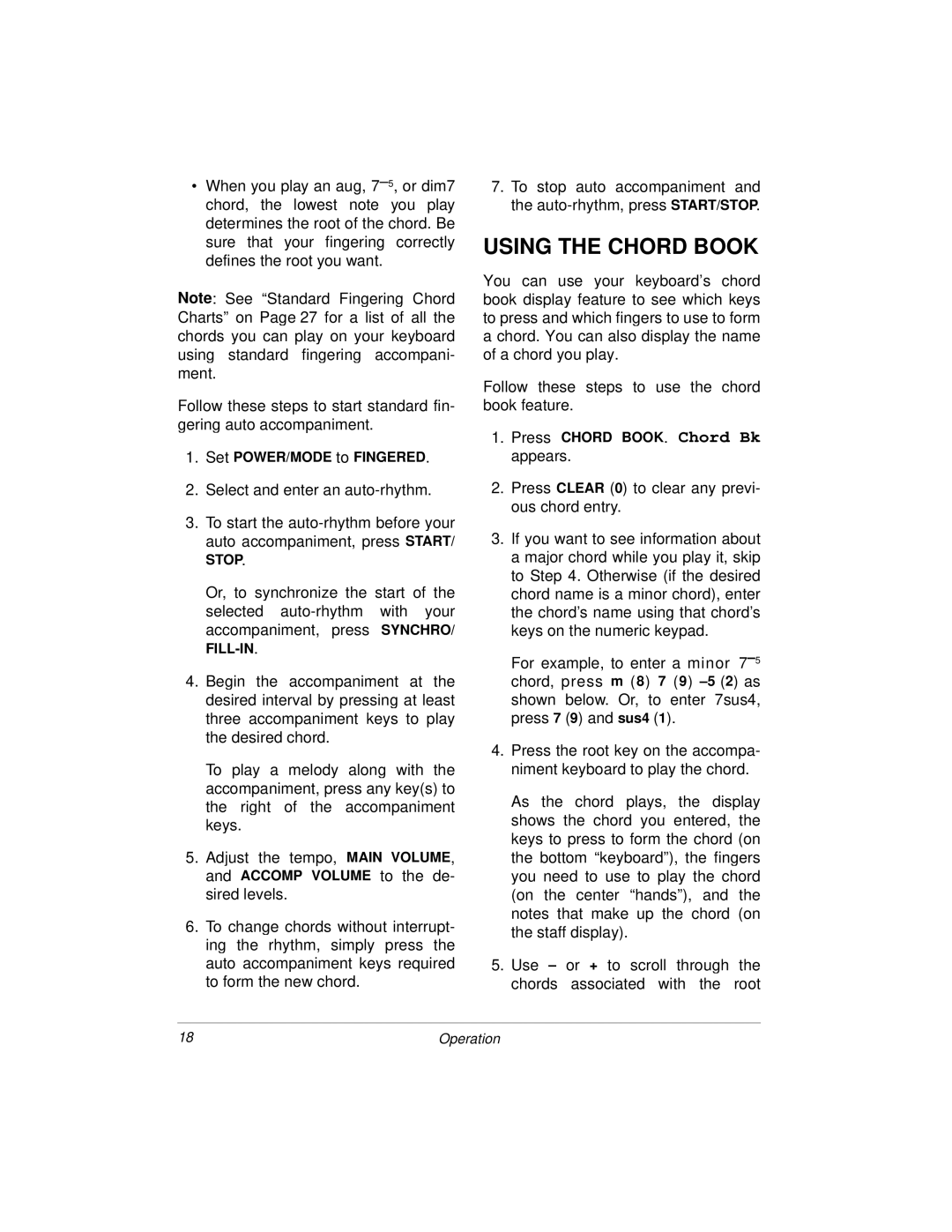•When you play an aug,
Note: See “Standard Fingering Chord Charts” on Page 27 for a list of all the chords you can play on your keyboard using standard fingering accompani- ment.
Follow these steps to start standard fin- gering auto accompaniment.
1.Set POWER/MODE to FINGERED.
2.Select and enter an auto-rhythm.
3.To start the
Or, to synchronize the start of the selected
4.Begin the accompaniment at the desired interval by pressing at least three accompaniment keys to play the desired chord.
To play a melody along with the accompaniment, press any key(s) to the right of the accompaniment keys.
5.Adjust the tempo, MAIN VOLUME, and ACCOMP VOLUME to the de- sired levels.
6.To change chords without interrupt- ing the rhythm, simply press the auto accompaniment keys required to form the new chord.
7.To stop auto accompaniment and the
USING THE CHORD BOOK
You can use your keyboard’s chord book display feature to see which keys to press and which fingers to use to form a chord. You can also display the name of a chord you play.
Follow these steps to use the chord book feature.
1.Press CHORD BOOK. Chord Bk appears.
2.Press CLEAR (0) to clear any previ- ous chord entry.
3.If you want to see information about a major chord while you play it, skip to Step 4. Otherwise (if the desired chord name is a minor chord), enter the chord’s name using that chord’s keys on the numeric keypad.
For example, to enter a minor 7– 5 chord, press m (8) 7 (9)
4.Press the root key on the accompa- niment keyboard to play the chord.
As the chord plays, the display shows the chord you entered, the keys to press to form the chord (on the bottom “keyboard”), the fingers you need to use to play the chord (on the center “hands”), and the notes that make up the chord (on the staff display).
5.Use – or + to scroll through the chords associated with the root
18 | Operation |
